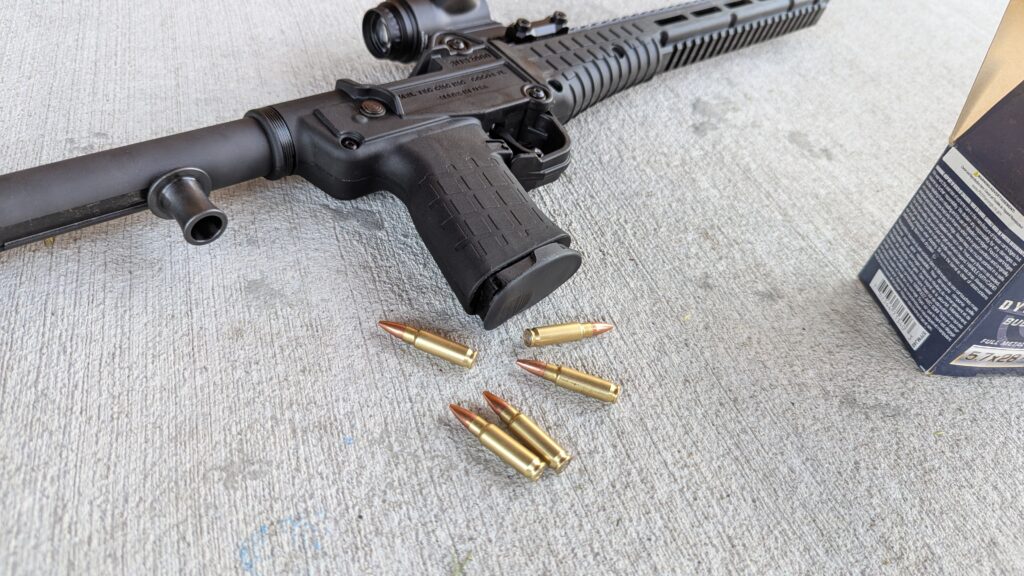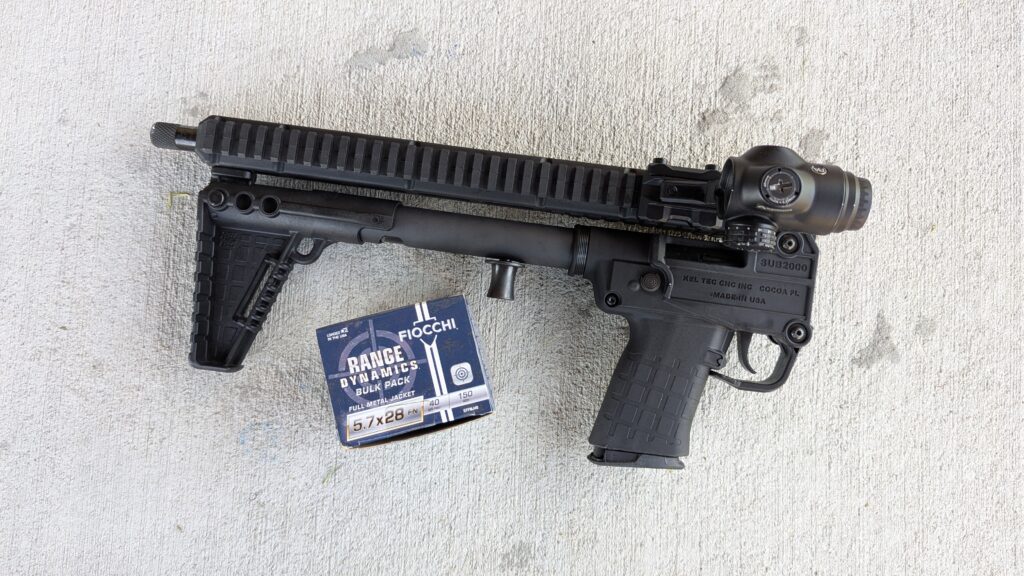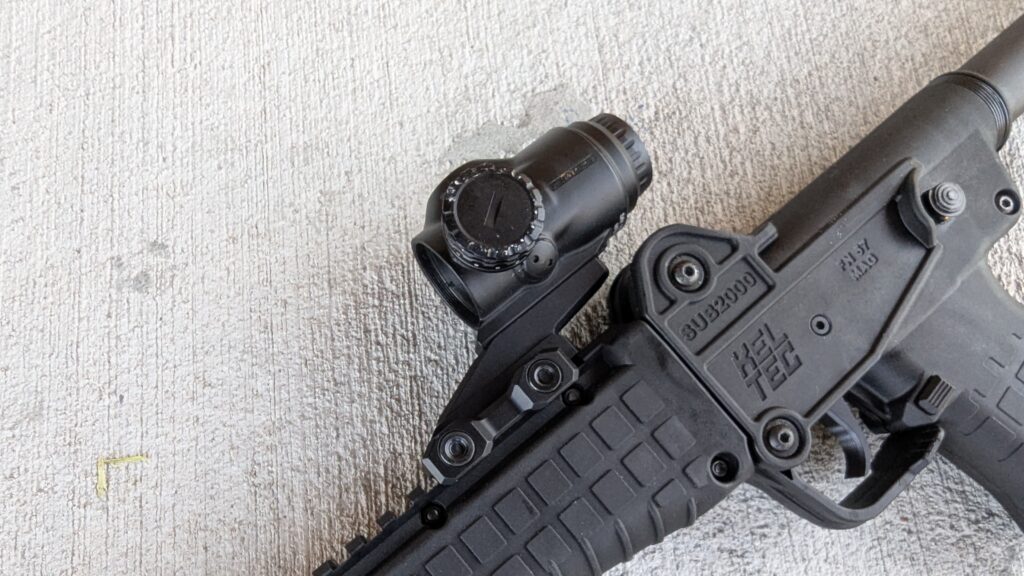In the United States, a rifle is typically defined as either a rifle chambered in a rifle caliber or a rifle that chambers a pistol round. There isn’t much in between the two. We often categorize the humble 5.7x28mm as a pistol round, even when fired from rifles. In reality, both the 5.7x28mm and the 4.6x30mm are oddballs. They aren’t quite pistol rounds, but they aren’t quite rifle rounds either.

As such, the firearms that chamber these cartridges tend to be treated as Pistol Caliber Carbines (PCCs) rather than true rifles. But what if we treated it more like a rifle round? We won’t achieve rifle-like performance, but the cartridge can certainly exceed typical pistol performance. These rounds are bottlenecked and resemble micro-sized rifle cartridges. They fire small, lightweight projectiles and tend to be flat-shooting.
They don’t have the same dramatic drop as traditional pistol rounds. In fact, they tend to act more like .30 Carbine than either rifle or pistol rounds. While they don’t have the same effective range as .30 Carbine, they come surprisingly close. As the owner of a new KelTec Sub 2000 in 5.7x28mm, I decided to treat the 5.7 as a rifle round.
Treating the 5.7 As A Rifle Round
I could have simply thrown a red dot on the Sub 2000 and called it good, but I wanted to increase my effective range. I opted for a Primary Arms 3X Microprism. A fixed 3X magnifier, roughly the size of a compact red dot, seemed perfect. The eye relief is tight, so I have to lean in and get close. It’s slightly less than comfortable, but it works.

If you’ve ever used an ACOG on an M16, you’ll understand the feeling I have with a Microprism on a KelTec. The 5.7 round shoots quite flat out to 150 yards and performs well even at 200. By 200 yards, its drop begins to approach the level of a 9mm at 100 yards. Not bad at all, and that seems to be the perfect range to utilize my Microprism.
Next, I wanted to figure out the Maximum Point Blank Range (MPBR) of the 5.7. I needed to factor in cartridge velocity, sight height, and the ballistic coefficient of the cartridge. I’m not mathematically inclined enough to do the calculations manually, but there are plenty of online calculators to do it for me.
Maximum Point Blank Range
Maximum Point Blank Range is the distance a projectile can travel without rising or falling more than a predetermined measurement above or below the point of aim. My predetermined measurement was a six-inch target. That’s pretty good for my purposes. Imagine my surprise when the MPBR came out to 17/147 with a maximum of 170 yards.
This means if I zero at 17 yards, the cartridge will be able to hit a six-inch target at any range between 17 yards and 147 yards without any holdovers. Anything closer or beyond will require a slight holdover. The maximum range of 170 yards means it can still hit the target, but expect it to impact low.

Knowing the MPBR allowed me to derive a “battle sight zero” (BSZ) for the gun. A battle sight zero is a zero that enables you to shoot accurately at multiple ranges without having to adjust your sights. BSZs are not the most precise way to zero and use a rifle, and they are certainly subject to plenty of criticism.
However, they are also a simple and useful way to zero your rifle. The classic 50/200 or 36/300 zeros are widely accepted examples of BSZs. With an MPBR of 17/147, we can derive a simple 17/150-yard BSZ. I rounded up three yards simply because it makes more sense.
Getting Practical With It
Zeroing at 17 yards might be the easiest rifle zero out there. It was quick and easy, and I was on target in no time. With the zero confirmed, I walked back to 150 yards, aimed dead center on a 10-inch gong, and fired. I did this without support, wanting to test my own off-hand skills. I was happy to report I hit more than I missed.
When I eventually settled on a support, I realized I needed to adjust it about an inch up to be completely satisfied with my hits. No problem, a slight adjustment, and I was consistently ringing that gong. That is, until the gun got hot. Turns out a gun that’s mostly polymer with a folding barrel has some accuracy issues when it heats up.

With a cool gun, I moved to 200 yards, and according to my ballistic calculator’s calculations, I had to account for about ten inches of drop. So, if I aimed just over the top of the 10-inch gong, I should still be able to get solid hits, right? Yep!
I aimed a little above the gong and could just barely hear the “dings” at 200 yards. The little 5.7 isn’t “smacking” the steel like a shotgun slug, to be fair. I also made plenty of misses on the gong. The 5.7 doesn’t have much wind resistance, and I’m not that good of a shot.

With the gun rested, I was making most of my 200-yard hits, and I was fairly impressed. This time, I used a fence for support, which was necessary because I’m not that great of a shot without it. If I moved to a bigger target, like a silhouette, making hits wasn’t a problem, especially if we count any hit as a good hit.
More Than a Pistol Round
The 5.7 isn’t quite a pistol round, but it’s not a true rifle round either. However, if we treat it like a rifle round, it performs fairly well. I bet that through an AR or similar modern rifle, it would be considerably more accurate. The KelTec has its challenges, but it’s good enough for me and my shooting skills. I think we might be underestimating the 5.7x28mm, and it deserves a second chance.
Read the full article here













